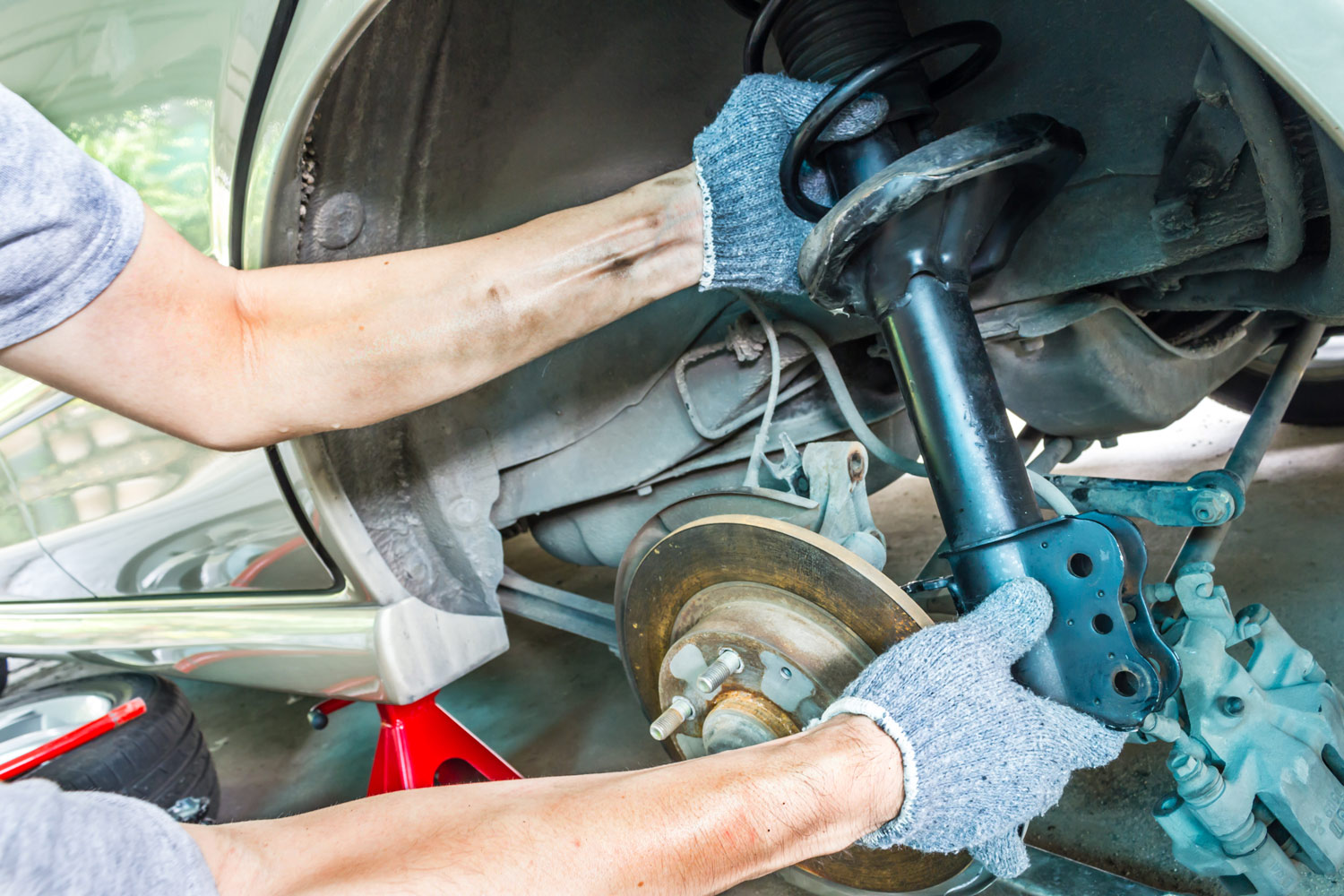What Are Struts On a Car?
Struts do much of the heavy lifting when it comes to your suspension components.
 Shutterstock
Shutterstock
The suspension system on your car not only determines how smoothly your car drives, it also plays a huge role in your safety. In addition to sway bars, links, bushings, and bearings, every vehicle has either struts or shocks at each wheel to help dampen road vibrations.
What Struts Do On a Car
A strut supports the weight of the car and also affects its ride quality, brake performance, and steering response. It is a major structural component in your car's suspension and steering system.
Struts are usually found on the front wheels of front-wheel-drive cars, although rear-wheel-drive cars can have struts as well. Automotive engineers utilize struts to save space, weight, and complexity, compared to a more complicated suspension arrangement.
Although the terms are often used interchangeably, a strut and a shock absorber are different.
If your car is designed with struts, it will not drive without them. A shock, which is part of a strut, has one function: to soak up bumps at each wheel. You could technically drive your car without shocks, although you'll bounce down the road uncontrollably.
It is recommended to replace your struts every 50,000 to 100,000 miles with normal use. However, if you regularly drive off-road or live where rust could be a problem, you might need to replace them more often.
When Should You Replace Your Struts?
There are signs to look for if you start to suspect that your struts need to be replaced. If your car feels unstable or floaty on the highway, it's potentially time for new struts. You might notice it bouncing over small pavement undulations, and you might even feel unsafe. Similarly, you might feel the car's body rolling through a turn. That could mean a strut has lost compression and should be replaced.
A bad strut can also affect your braking. If the car feels wobbly or if the front dives under heavy braking, that is a sure sign your struts are worn out. Similarly, if the rear squats and the front lifts when accelerating, that's a warning sign. In essence, your struts can't handle the weight transfer.
If the car hits a pothole and keeps bouncing down the road long after the impact, it's time to see your mechanic. Your car should settle quickly after a bump. Your struts are supposed to keep the tires in contact with the road at all times. An irregular wear pattern on your tires can also indicate a deteriorated strut.
If you see fluid on the outside of the struts, you've got problems. An oil leak means the strut seals have failed and the unit is functioning at a subpar level. Also, if you push down on the front of your car — as if you're trying to bounce it — and it doesn't settle down quickly, that's a sign the struts are likely worn out.
How Much It Will Cost to Replace Struts
Replacing your struts isn't cheap, but it is unsafe to drive with worn-out components, so you shouldn't delay the work. Repair Pal is a website that, among other services, provides average cost estimates for a wide range of services on different cars. For example,
Of course, this will vary with your location and your specific car's year, make, and model, and sometimes trim level.
Written by humans.
Edited by humans.
 Emme Hall
Emme HallEmme Hall loves small convertibles and gets out to the canyons in her 2004 Mazdaspeed Miata whenever she can. You can also find her in the dirt in her lifted (yes, that's right) 2001 Mazda Miata, or racing air-cooled Volkswagens in races like the Baja 1000. She's taken first place twice in the Rebelle Rally — once driving a Jeep Wrangler and then a Rolls-Royce Cullinan the second time. She was also the first driver to take an electric vehicle to the Rebelle Rally when campaigning the Rivian R1T to a top-five finish.
Related articles
View more related articles